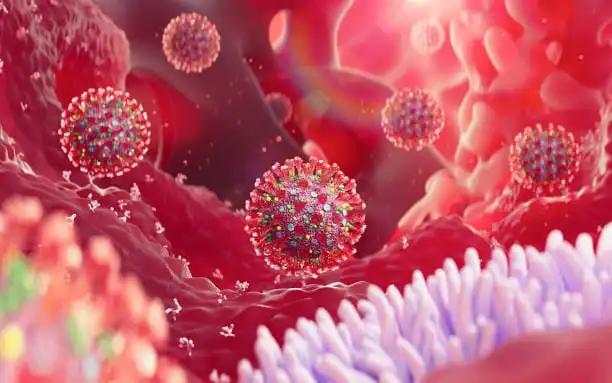KEY TAKEAWAYS
- The study aimed to investigate the correlation between PD-L1 expression and tumor-infiltrating immune cells in the TME of early-stage resected NSCLC.
- Researchers found strong correlations between PD-L1 expression, smoking intensity, squamous histology, and tumor-infiltrating immune cells, suggesting potential predictive factors for immunotherapy response in resected NSCLC.
Perioperative immunotherapy is crucial for resected non-small cell lung cancer (NSCLC), yet the search continues for reliable predictive biomarkers, given PD-L1’s limitations. Understanding tumor-infiltrating immune cells in the tumor microenvironment (TME) is pivotal for predicting responses to PD-1/PD-L1 inhibitors. Thus, investigating PD-L1 expression in early-stage resected NSCLC is imperative.
Giedrė Gurevičienė and the team aimed to assess PD-L1 expression’s relationship with TME and its potential as a predictive biomarker in resected NSCLC.
Researchers performed an inclusive analysis assessing PD-L1 expression using three scoring methods: tumor proportion score (TPS), immune cell score (IC), and combined proportion score (CPS) in 72 archival tumor tissue specimens from stage I-III surgically resected NSCLC patients. Associations with immune cells in the TME were explored.
Researchers found that PD-L1 expression of ≥1%, assessed by TPS, IC, and CPS, was detected in 28%, 36%, and 39% of cases, respectively. Moderate to strong agreement was observed between TPS and IC, TPS and CPS, and CPS and IC (Cohen’s κ coefficient: 0.556, 0.63, and 0.941, respectively). PD-L1 TPS, IC, and CPS correlated with smoking intensity (r = 0.305, P = 0.013; r = 0.378, P = 0.002; r = 0.0305, P = 0.012, respectively).
PD-L1 TPS was associated with squamous cell carcinoma (P = 0.028). PD-L1 IC ≥1% was more common in tumors with high CD4+ T cell infiltration (P = 0.02), while PD-L1 CPS ≥1% was observed in tumors with high CD4+ and CD8+ T cell infiltration (P = 0.021 and P = 0.048, respectively).
PD-L1 IC and CPS ≥10% were more frequently detected in tumors with a greater number of tumor-infiltrating CD4+Foxp3+ T cells (P = 0.01 and P = 0.025, respectively). PD-L1 TPS ≥50% was associated with a higher probability of detecting a greater number of tumor-infiltrating M2 macrophages (P = 0.021). However, no association was found between PD-L1 expression alone or in combination with tumor-infiltrating lymphocytes, macrophages, and disease-free or overall survival.
The study concluded that rates of PD-L1 expression correlated consistently among the three scoring methods (TPS, IC, and CPS). Additionally, PD-L1 expression showed significant associations with smoking intensity, squamous histology, and tumor-infiltrating immune cells.
The study received no funds.
Source: https://pubmed.ncbi.nlm.nih.gov/38541208/
Gurevičienė G, Matulionė J, Poškienė L, et al. (2024). “PD-L1 Expression and Tumour Microenvironment Patterns in Resected Non-Small-Cell Lung Cancer.” Medicina (Kaunas). 2024 Mar 14;60(3):482. doi: 10.3390/medicina60030482. PMID: 38541208; PMCID: PMC10972066.



